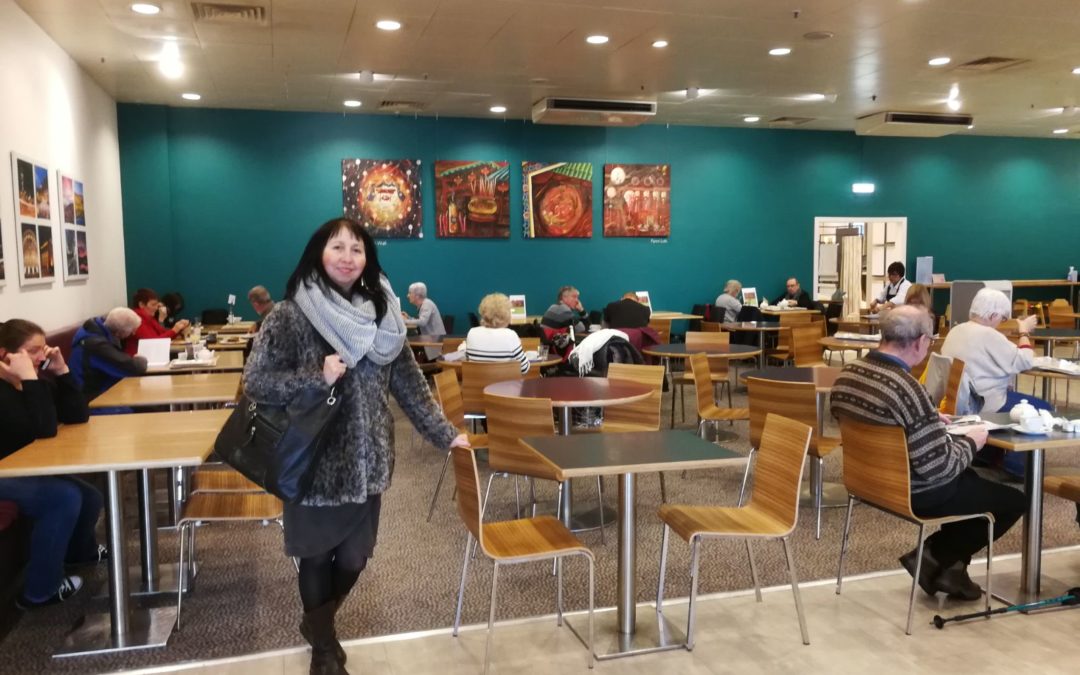
by admin | Dec 11, 2019 | News
As a creative entrepreneur, I draw on my maternal and paternal grandmother’s lines who collectively migrated to different countries for work, spanning China, Africa, Malaysia and the U.K. I was born in London. At 7, I won a scholarship to a local arts school but with regular school work my creative writing took a backseat. My secondary school acknowledged my Art School attendance but firmly guided me into the vocation of social work. Four years later I graduated as a Qualified Social Worker with a B.A. in Applied Social Studies and was straight into a job.
Maternity leave gave rise to the space to reconnect with my love of art, taking various arts courses including a Mature Access course in Art. My portfolio gained me a place on an Art degree, which I juggled whilst being a single parent. My dining room and floor became my studio. Whilst working on my final project, based on ancient China, my Chinese grandparents died within weeks of one another.
When I graduated my art degree I knew I had to make a major shift in my life to keep creativity at the centre. Earning some extra cash at a community environmental charity, I saw the potential to combine my people skills with my artistic skills. My creativity flourished running arts environment clubs for children. In 1999, I met an arts co-ordinator of women’s art exhibitions in Malaysia who invited me to exhibit in Thailand, along with three Thai Princesses! 3 years later I organised an international women’s art exhibition and conference in Sheffield, with artists from 9 countries.
Persuaded by a random meeting with a fellow conference delegate, I applied to do the MA Art as Environment at university, where they instantly understood my live art practice from the inception of my idea/vision to the engagement of others to the event. This was very helpful to me as an artist as by now I had initiated a Multicultural Festival that thousands attended annually.

In 2004 I was granted a bursary place on a PhD in Art and Design at Manchester Metropolitan University. Initially, I had the fun of interviewing other British Chinese artists, lots of reading and writing and still had time to lead workshops, paint and exhibit. It is fair to say though that in the last year of my PhD I had to withdraw to craft and shape my doctoral thesis as well as a Live Art exhibition-East-West, Spirit, Earth funded by the Arts Council England. In the spring of 2010 I was awarded my doctorate and had exhibited in Australia, South Korea, China, Malaysia and India.
Graduating from my doctorate, I knew I must paint more so after completing an arts project with refugees in Barnsley I exhibited the group piece, film and my own art in the U.S.A. which I mailed the work to, but didn’t attend as my mother became seriously ill and later passed over. The sad death of my mother gave me a greater need for reflection and on the strength of submitted creative writing I’d had as a break from my thesis, I got a place on the MA Creative Writing at Sheffield Hallam University.
The following years I was invited to exhibit in Vietnam, Russia, Mongolia, Hong Kong, Taiwan and have just come back from exhibiting in Malaysia as part of a Thai-Malaysia collaboration that I was invited to exhibit in in 2017. I’ve also continued to write and in 2019 had a short story in an anthology published by University of Bradford entitled The Living and The Dead.
I have found a symbiotic relationship between painting and writing and I can cross train my skills such as in 2018 holding a live art event-A Seat at The Table –afternoon tea the Sheffield way in my current part time role as Co-ordinator for Cohesion Sheffield.
As an entrepreneur, one has to have passion but to be innovative, resourceful and learn to take risks. Most of all, one has to be persistent which bring success through overcoming challenges and brings resilience which helps in one’s life overall. To end this part of my story I thank my mother and grandmothers before me.
Panni Loh
www.panniloh.com
panni@panniloh.com
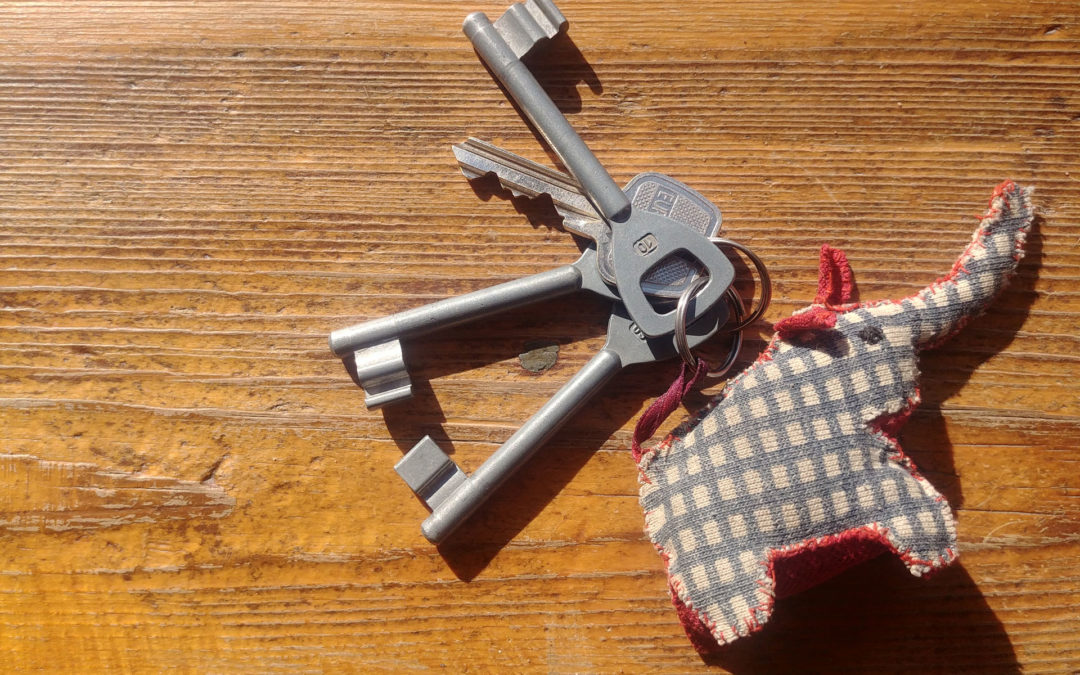
by admin | Oct 24, 2019 | News
by Anna Ochmann
We were holding our keys in our hands. Some of them were single, others were in whole bundles. One could see keys for a flat or a studio, the tiny ones were associated with mailboxes, padlocks or keys to bicycle locks. There were classic keys, flat keys, but also unusual, round keys with strange grooves – the so-called ‘anti-burglary’ keys. The golden and silver ones dominated, only one of them was distinguished by metallic greenery. Some were “professionally” marked with colourful plastic tags on the “heads”, others were “artistically” painted with nail polish to be easily plucked out of the bundle. Sometimes they were all attached to one ring, sometimes a few rings with keys attached to them formed a “bunch of grapes”. Some of them were distinguished by key rings, which allowed us to guess the passions and interests of the owners. Among us there was a pussycat lover with a funny cat attached to the keys, a practical amateur of drinks in bottles with an bottle opener attached as a key ring. A souvenir tag evoking memories of holiday days somewhere in Asia stood out with its shiny colours. A few people instead of keys showed hotel room cards (the meeting was organized within the framework of the meeting of international partners of the project) certifying the “nomadic” lifestyle of their owners….
The host of the meeting invited us to take part in an ice-breaker game – we were supposed to say a few words about ourselves through the prism of our keys.
My bunch of keys was the biggest. It had a lot of “subsections”, with even smaller “subsections” attached. In my bunch there were keys to the house, to the studio, to the office, to my husband’s office, to the gate, to the garden shed. To mailboxes (professional and private), and even the main power switchboards in the house and in the office, to the gas meter box, and to a water meter box… For the first time in my life I’d counted them… I had 22 keys on me. And no pendants, no sentimental accessories. Practicality in crystal clear form.
I was holding them in my hand and my first thought, in the context of describing myself through these keys, was: “I think something is wrong with my work-life balance.”
***
It was just a fun game, but it inspired me to write these few words. About the lack of work-life balance and the need to take good care of the balance between one’ s private life and one’s professional life, especially when working in the cultural and creative sector.
***
The decision to choose an artistic career path is usually accompanied by a great passion, love for art, a need to express oneself artistically. And there comes a day when this passion becomes the basis for making a living. And because art is most important, inspirations endlessly keep coming from everywhere, it is very easy to lose yourself in this work, to lose the sense of time, and never leave it. The thoughts in our minds about our own work keep appearing, which is also part of this job. More and more ideas, improvements, corrections. Changes. Next inspirations, emotions, and, suddenly… 16 in the studio have just gone by.
Neither is there a superior who would congratulate you on a job well done or give you a bonus….
And then there are days when these inspirations are hard to find. Emptiness, a sense of infertility, and the thought that maybe this talent has already been exhausted. Nothing becomes an inspiration, and the optimistic date agreed with the client is approaching suspiciously fast. It takes long hours to persuade the muses to come with help once again. You can either procrastinate a little (because nothing sensible comes to mind anyway) or clean up (because nothing sensible comes to mind anyway). And then suddenly… 16 hours in the studio have gone by.
In addition, due to the specificity of the sector (mainly freelancers and micro-enterprises), the artists work mostly alone, so no boss is going to say “go home, no more work for today” or any colleague is going to say “let’s go for a pint”. There is no check-in or out machine at the door. There is also no coffee break in the office kitchen with colleagues, which would allow thoughts to float away towards the latest gossip from the HR department or even serious political disputes.
Neither is there a manager who would congratulate you on a job well done or give you a bonus….
Passion and love for art are more and more often replaced by lack of self-motivation and sense of hopelessness, uneven fight against bureaucracy and ‘paperwork’, searching for clients, making cost estimates, begging for a bank transfer. Instead of creating ‘works of art’, one has to think about marketing, accounting, and subsequent taxes to be paid. And another day passes unnoticeably, and it seems that those 16 hours in the studio were just a blink of an eye….
And when there comes a dream about having a rest or holidays, it turns out that if you don’t work, you don’t earn money. And the guilt you feel when you don’t work makes you work all the time. And so it goes….
***
Luckily, I have a job that still gives me a sense of fulfilment and satisfaction, and, thanks to which I can earn a living. And because I still have this passion in me, it’s easier for me to forget about myself and my life outside of work. This is also because the people I work with are often also my friends. So even in private situations professional topics come up somehow automatically – and then… I keep the keys to everything in one bunch, I never separate them.
Therefore, I decided to separate these two worlds in a symbolic way… For a few days now I have had two sets of keys. Keys for my private life. And keys for my professional life. Separately. I have detached a few keys for good. And although I have to run twice as often up and down the stairs now when I go out to the studio and forget my “professional” keys, or when I come home and remember that the “private” keys are left in the desk drawer, I believe that I will manage to control it someday.
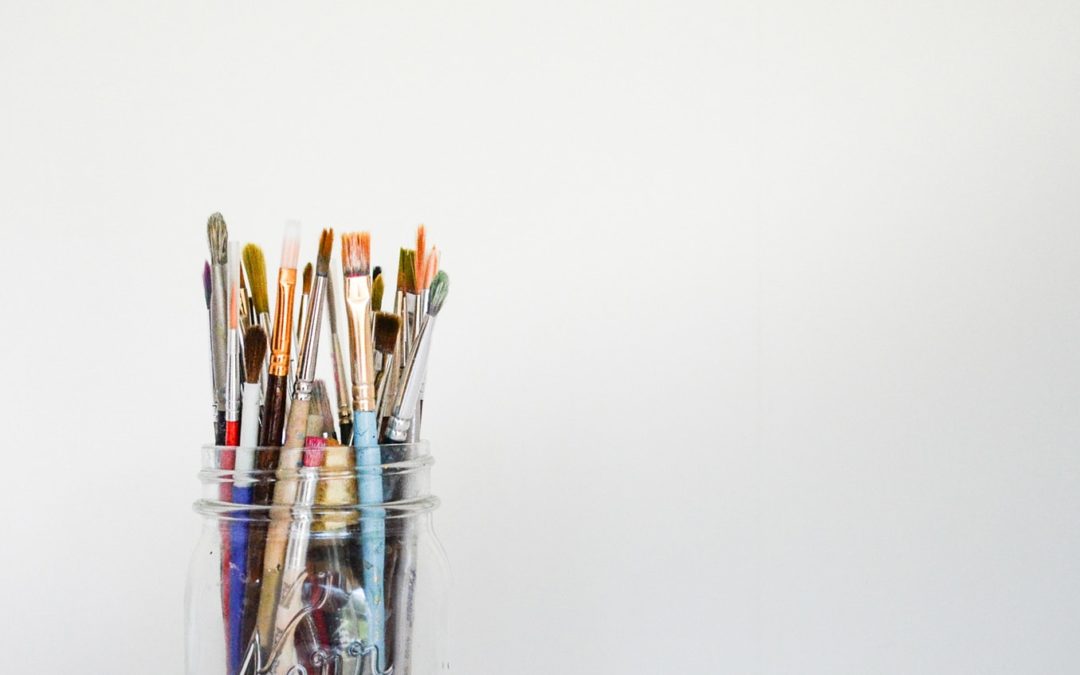
by admin | Aug 9, 2019 | News
UK results and what’s to come!
Female Artists and Creatives in the UK are underrepresented in almost all of the creative sectors. From the lack of female-made art in London galleries, to the minimal representation of women in higher positions in creative fields, gender inequality is still ever present! So, what can we do to help?
 The Global FemART project has been created to help female Artists and Creatives across Europe to develop their own businesses on an international level. With the help of Inova Consultancy, Materahub, Fundacja ARTeria, FyG Consultores and Odisee, the Global FemART project aims to inspire more women to take the leap into globalised trade and bridge the creative sector’s gender gap!
The Global FemART project has been created to help female Artists and Creatives across Europe to develop their own businesses on an international level. With the help of Inova Consultancy, Materahub, Fundacja ARTeria, FyG Consultores and Odisee, the Global FemART project aims to inspire more women to take the leap into globalised trade and bridge the creative sector’s gender gap!
To kick start this project, each partner conducted focus groups and interviews in different countries to understand these issues from the perspective of female artists and creatives and coaches in the same field. The results were very interesting and, in the UK, revealed some invaluable points!
During this session, six female artists and creatives, from the Sheffield area, came together to discuss how artists and creatives develop their creative businesses and start to think about globalisation and reaching an international market.
Getting to know these wonderful ladies allowed Inova to truly see the artistic talent Sheffield has to offer! The group consisted of Musicians, Graphic Designers, Sculptors, Textile Designers and a Silversmith! This diverse group helped the Inova team to understand the barriers faced by female artists and creatives and the specific training modules which would help them to develop both personally and professionally, in relation to business globalisation.
From the UK focus group, it became clear that experiences of gender inequality vary between different creative fields. With regards to internationalising a creative business, many artists and creatives need tools to help with organisation, planning, business management and developing an international plan.
So! What’s coming next?
Inova Consultancy’s methodology of the Mentoring Circles™ has been adapted to create the Artist Circles™ for the Global FemART project! Created in 2001, the Mentoring Circles™ methodology combines peer and one-to-one mentoring support to help people through change, development and personal growth. Using all the information gathered from Artists and Creatives, the Artist Circles™ have been adapted from Inova’s original methodology to suit the specific needs of this audience. Focusing on different aspects of business growth, with a global outlook, the Global FemART Artist Circles™ are set to help women across Europe to succeed in internationalising their creative business and developing both personally and professionally.
For more information on the project and the latest updates about our training, check out the Global FemART Facebook page: https://www.facebook.com/GlobalFemArt/
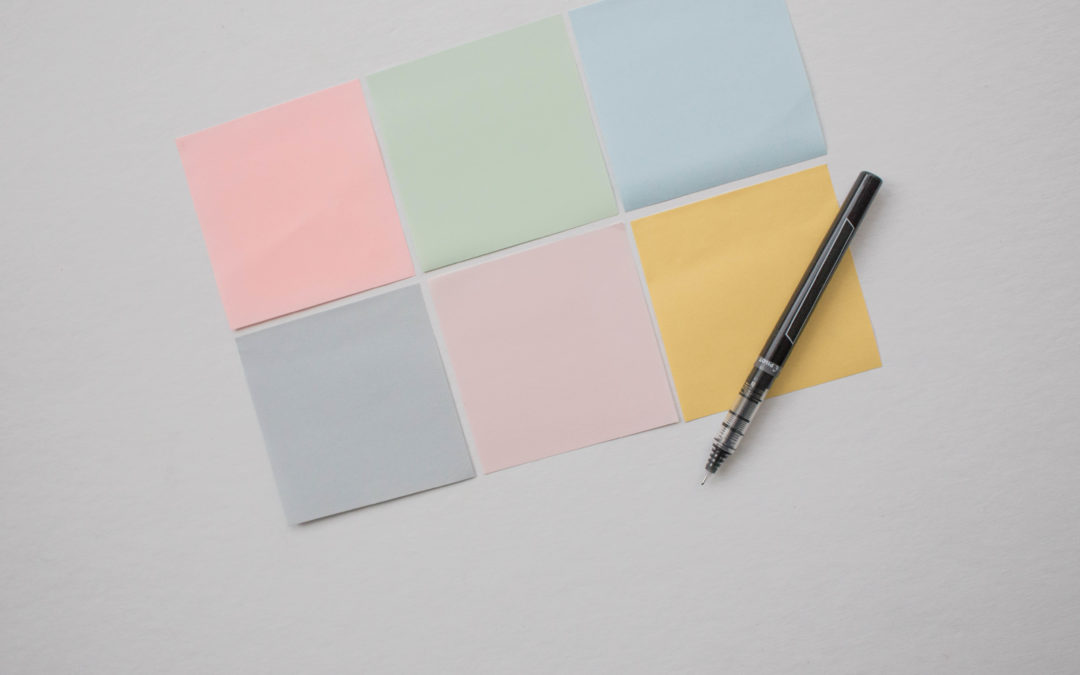
by admin | Jul 1, 2019 | News
by Anna Ochmann
A huge, rectangular industrial hall — Silesia of my childhood is peppered with them. But this one differs from a typical factory hall. The cleanliness and intense glow of fluorescent lamps make you feel like you are not in a hall, but rather in an operation theatre. Plus the ‘equipment’. The large, open space is filled with a maze of strange metal-glass ‘cabinets’ containing large spool-disks. I gaze with delight as one of them spits a steady long print filled with X-s and 0-s arranged in Mickey Mouse’s drawing… In a moment, with specific crackling-and-rattling noise, the duck’s feet are slowly printing… ‘Donald Duck’, I shout, happy that I recognised another X-0 character…
I zealously fill all the shapes of Disney characters with crayons sitting on the ground in front of the row of ‘wardrobes’. A tangled web of printers connected to two computers (also the size of cabinets) lurks above me. It’s ‘George’. I still remember the noise of air conditioning — regular, but after a while less and less perceptible. A constant temperature in the room is very important. George should not be overheated.
I sharpen the pencils while my grandfather patiently explains what it is all about. The strange contraptions count salaries for miners and print their ‘payslips’. There are only two such machines in Poland. The second one works for the Central Statistical Office in Katowice. Mining is a very powerful industry in Poland in the 1980s, so it can afford to buy such equipment. And, thanks to my Grandfather, I get to know THIS word…
Computer.
***
My parents belong to a generation of Radio Free Europe which is illegal in the then Poland. Its characteristic signal has accompanied me from the earliest childhood. Broadcasts and songs by Jacek Kaczmarski shape me in my salad days — as much as ‘unofficial’ reading. To this day, I remember the first sentences of Hemingway’s For Whom the Bell Tolls or Gore Vidal’s Creation devoured during some sleepless nights. But my childhood is also haunted by a different sound. Strange. Muffled. We are not allowed to talk about it to anyone, neither at school, nor at kindergarten, nor at the playground. The sound is coming out from under the blanket, where my parents rewrite the clandestine Solidarity bulletins. They do their undercover work by means of an ordinary typewriter, although it lacks any tape and carbon paper. Instead, a dedicated paper is applied — waxy and quite difficult to fill because one has to hit the keys as hard as possible. The muffling blanket is then a must: in the socialist blocks of flats made of prefabricated concrete panels, sound conductivity goes beyond the wildest expectations. The hits leave convex marks on the paper. One need to cover them with ink and make some duplicates. The quality is poor, and the number of copies obtained from a single ‘matrix’ — limited. That is the reason why so many underground workers like my parents are active. Nobody knows about text editors or home printers at that time, not to mention photocopying.
My mother then ‘spreads’ the produced leaflets in my sister’s pram. Once she loses a bag including both the ‘hot stuff’ and her documents. I remember the fear of arrest pervading our family. But this is a completely different story…
***
Rainbow flag in the bottom right corner. 48 kB of RAM. 3.54 MHz of power. Joystick. And, at the same time, the first computer keyboard in my life — made of rubber (sic!). Plus an inseparable cassette player. ZX Spectrum.
Squeals, squeaks, and creaks torment my ears while uploading — from a cassette tape recorder — ‘Boulder Dash’, my first computer game. It takes place in a labyrinthine world full of stones and diamonds. There is also a shooter called ‘Commando’ (from my perspective, something for boys). And a race titled ‘Turbo Esprit’ (in general, also boy-targeted).
At home, the radio is no longer heard (the TV takes its place), so I miss that from time to time, in the evening programme, Scout Broadcasting Station of the Polish Radio emits the so familiar squeaks and creaks. It’s enough to record them and load the latest game from the cassette…
Several years later. Impatient waiting for Dad’s return from Germany. The real Germany, Western. And for Amiga 500. It’s like a jump to a very remote galaxy. Motorola processor. 0.5 MB of RAM (expandable to 8MB!). And, above all, no more cassettes — ‘disks’ are used instead. Floppy disk —another new word. The computer has a 3.5-inch drive and stereo sound. It displays 4096 colours…
I remember playing ‘Lemmings’… and paging through a 13-volume illustrated encyclopaedia to see what these cute animals really look like.
***
And then the world speeds up. I still remember the large dish of satellite TV, which covered most of the window. My dad’s first mobile phone, which had a form of a suitcase with an attached handset. It resembled landline telephones, which long remained unavailable to many Poles (unless you had connections) even it is after the revolution of 1989 and Poland is developing in a very dynamic pace. The receiver was heating up so much that burned one’s hand in few minutes, which inevitably led to shorter calls.
I study at the Academy of Fine Arts in Kraków. I manually draw my entire diploma, all drawings, projections, cross-sections, and visuals. According to the statement expressed by one of my professors, the student who can draw by hand, can draw everything, every time, and everywhere — contrary to the poor wretches who got used to working only with computers and therefore are completely dependent on the access to the electric power supply.
I get my first computer from my grandpa as a reward crowning my graduation. A large box plus an even bigger screen. It’s special. Dedicated to graphics. It stands in my ‘studio’, that is, on the built-in balcony. In the winter, the frost easily pierces the thin and leaky window frames and makes my fingers numb when I try to understand how ‘Word or ‘Excel’ work. In the summer, I have the impression that I am sitting in a terrarium built specifically for a tropical species of reptile. And yet I stubbornly try to do my best with Word and Excel. Not to mention Corel draw…
I write this text sitting in a comfortable bus running for an international seminar. I write on a laptop weighing less than 2 kg. I use free wi-fi, Wikipedia, and photos taken with a smartphone, whose capabilities and functions are not even used by me in 10% … Applications on the phone, programs on the computer — they surround me creating opportunities I have not dreamed of as a child or student.
I am from the generation that is still — and will be long — active, professionally active. We had to face the digital revolution in our professional life. Also in art, in design. In access to information. In understanding and applying new tools.
But recently, during my classes with architecture students, watching how proficient they are using these tools of the digital, global world, I wanted them to return for a moment to the ‘roots’ and to reflect upon the white card and the ‘old-school’ 2B pencil.

by admin | May 23, 2019 | News
Foundation ARTeria organised a meeting of a Focus Group for the“Global FemArt – Supporting Female Artists and Creatives to Globalise their Business” project on 14th May 2019 in Kurort Qultury Gajowa 9, in Zabrze, Poland.
The main aim of the session was an in-depth needs analysis to complement the hard data of previous activities with first-hand testimonials so as to enable the partnership to develop training material that truly takes into account the specific needs of female artists and creatives running their own creative business. The event was prepared by Anna Ochmann and Wenanjcusz Ochmann, who was also a main facilitator and led the discussion.
The participants, 8 female artists and creatives from the Silesia area, discussed together about their artistic and vocational development, about their educational background, occupational and sectorial experience, personal competences, experience as female artists/creatives running their own creative businesses, and about possibilities of internationalisation of their work. The starting point for this discussion was a specially prepared questionnaire, which they completed at the beginning. Then the facilitators engaged the focus group in a discussion about the questionnaire and asked participants for feedback. The questions and the topics outlined aimed at exploring the personal knowledge of the participants, their critical awareness and their need to develop and improve their entrepreneurial competences among the 15 presented in the EntreComp (the comprehensive study carried out by the European Commission on the 15 core entrepreneurial competences identified in the Entrepreneurship Competence Framework).
The participants represented various areas in cultural and creative sector – we hosted visual artists, craft artists, but also an actress and musicians (vocalist and instrumentalist). This diverse group showed the potential of female art in Silesia! But we also talked about the barriers faced by female artists and creatives in their vocational development.
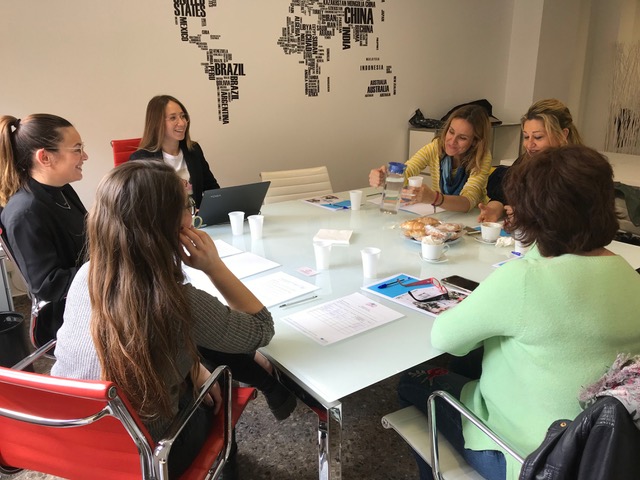
by admin | May 17, 2019 | News
At FyG Consultores we support the professional and personal development of artist and creative women. To reach this goal, we are part of the Global project FemArt, in which we participate with partners from different European countries: Materahub in Italy, Artery in Poland, Odisee of Belgium and Innova Consultancy UK.
Global FemArt aims to make it easier for creative women entrepreneurs to develop their business by creating a program that combines mentoring and online training. Thus, we want to promote the increase of personal and professional confidence of creative women, and provide them with tools for their business to grow. To achieve this, the project is divided into two parts: the first part, which is being developed now, aims to know and analyze firsthand the needs of women in the sector so later, during the second part, start promoting a quality training program, networking events and mentoring.
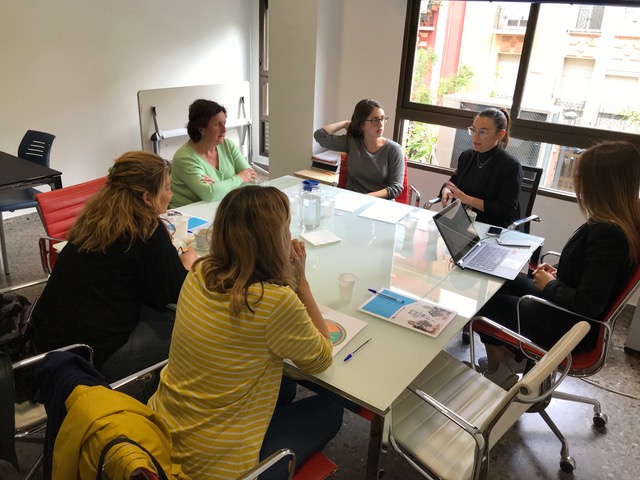
From FyG we are ready to start, so on April 24 we organized a group discussion (Focus Group) in our offices, having the pleasure of including the participation of creative women from different profiles. During one afternoon, we were able to know the needs and desires of different entrepreneurs, which was very inspiring and fruitful, both for us and for them. Thus, a very interesting debate was created in which they told us about them, their experiences and stories. It was debated about the challenges they deal with day by day, however, we discovered that they all had a common goal, to see their creative projects grow, improving their capacities related to the business world, and contributing something different to the market.
The FyG Team wants to thank all the women that joined us that day.
This is just the beggining of Global FemArt, we are looking forward organizing more events, ¡Stay tuned!




 The Global FemART project has been created to help female Artists and Creatives across Europe to develop their own businesses on an international level. With the help of Inova Consultancy, Materahub, Fundacja ARTeria, FyG Consultores and Odisee, the Global FemART project aims to inspire more women to take the leap into globalised trade and bridge the creative sector’s gender gap!
The Global FemART project has been created to help female Artists and Creatives across Europe to develop their own businesses on an international level. With the help of Inova Consultancy, Materahub, Fundacja ARTeria, FyG Consultores and Odisee, the Global FemART project aims to inspire more women to take the leap into globalised trade and bridge the creative sector’s gender gap!


